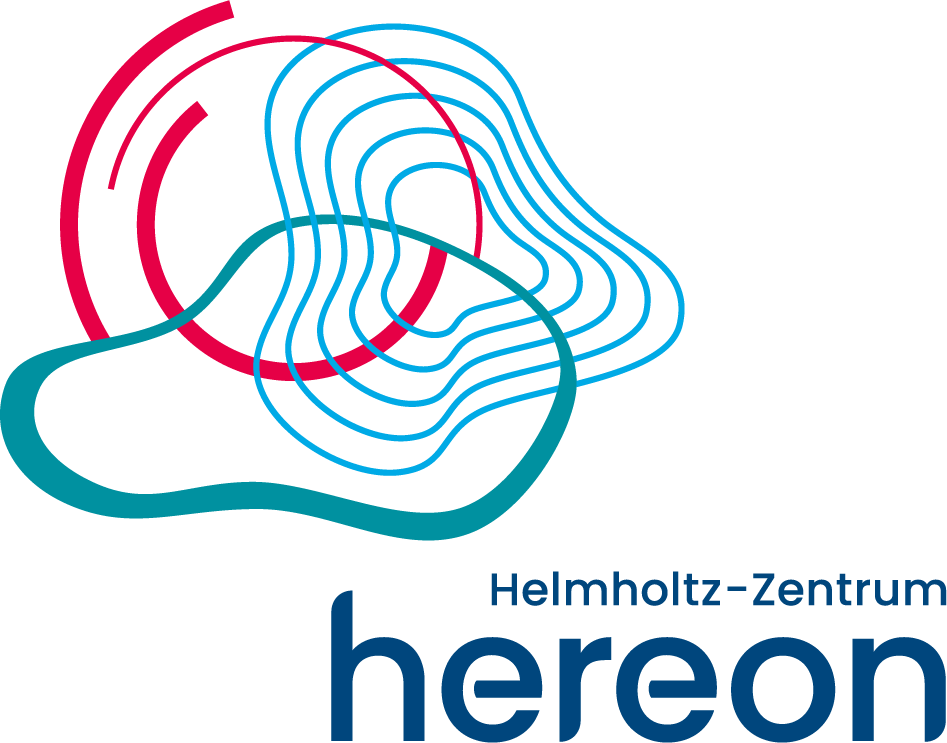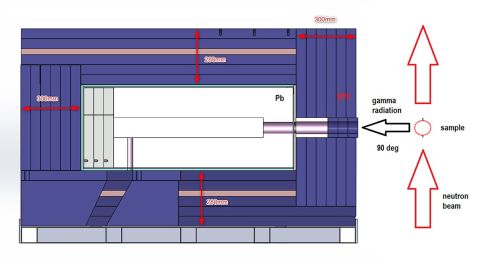MLZ is a cooperation between:
 > Technische Universität München
> Technische Universität München > Helmholtz-Zentrum Hereon
> Helmholtz-Zentrum Hereon
 > Forschungszentrum Jülich
> Forschungszentrum Jülich
MLZ is a member of:
 > LENS
> LENS > ERF-AISBL
> ERF-AISBL
MLZ on social media:

MLZ (eng)
Lichtenbergstr.1
85748 Garching
FaNGaS
Fast Neutron-induced Gamma-ray Spectrometry
FaNGaS (Fast Neutron-induced Gamma-ray Spectrometry) is a new instrument at MLZ. [1]
The instrument consists of an electro-mechanically cooled HPGe detector connected to a digital spectrometer for data acquisition and is surrounded by a complex shielding. [2]
FaNGaS utilisses fission neutrons at the SR-10 neutron beam tube to induce gamma radiation for chemical analysis. The particularly large beam diameter at SR-10 allows for the irradiation of large objects. Non-destructive qualitative and quantitative elemental analysis is performed by using prompt gamma irradiation that is induced by fission neutrons via nuclear reactions, such as (n,n’), (n,2n), (n,p) and (n,α). [3]
[1] Rossbach, M. et al., J Radioanal Nucl Chem 304, 1359 (2015).
[2] Randriamalala, T. et al., NIM-A 806, 370 (2016).
[3] Demidov, A.M. et al., “Atlas of Gamma-Ray Spectra from the Inelastic Scattering of Reactor Fast Neutrons”, Nuclear Research Institute, Baghdad, Iraq (Moscow, Atomizdat 1978).
- Irradiation of large samples (archaeology, industry, etc.)
- Fundamental research (nuclear data, partial and total cross-section measurements of different reactions, etc.)
- Neutron collimator: 6 cm diameter
- Multi-Leaf-Collimator: adjustable up to 27 × 19 cm2
- Typical beam size (sample size): 6 × 6 cm2
- Typical neutron flux: ~ 108 n cm-2 s-1, depending on filter
- n-type HPGe detector with a relative efficiency of 50%, connected to a digital spectrometer (DSPEC-50 from ORTEC)
- Detector cooling: CFG-X-COOL-III von ORTEC
- Detector shielding: BPE, PE und Pb
- Spectrum evaluation and calibration (non-linearity and efficiency) performed using the HYPERMET-PC Software
Instrument scientists
Dr. Iaroslav Meleshenkovskii
Phone: +49 (0)89 158860-602
E-mail: i.meleshenkovskii@fz-juelich.de
Dr. Eric Mauerhofer
Phone: +49 2461/61-3341
E-mail: e.mauerhofer@fz-juelich.de
PGAA
Phone: +49 (0)89 289-14906
Operated by

Funding

Citation templates for users
In all publications based on experiments on this instrument, you must provide some acknowledgements. To make your work easier, we have prepared all the necessary templates for you on this page.
MLZ is a cooperation between:
 > Technische Universität München
> Technische Universität München > Helmholtz-Zentrum Hereon
> Helmholtz-Zentrum Hereon
 > Forschungszentrum Jülich
> Forschungszentrum Jülich
MLZ is a member of:
 > LENS
> LENS > ERF-AISBL
> ERF-AISBL
MLZ on social media:



